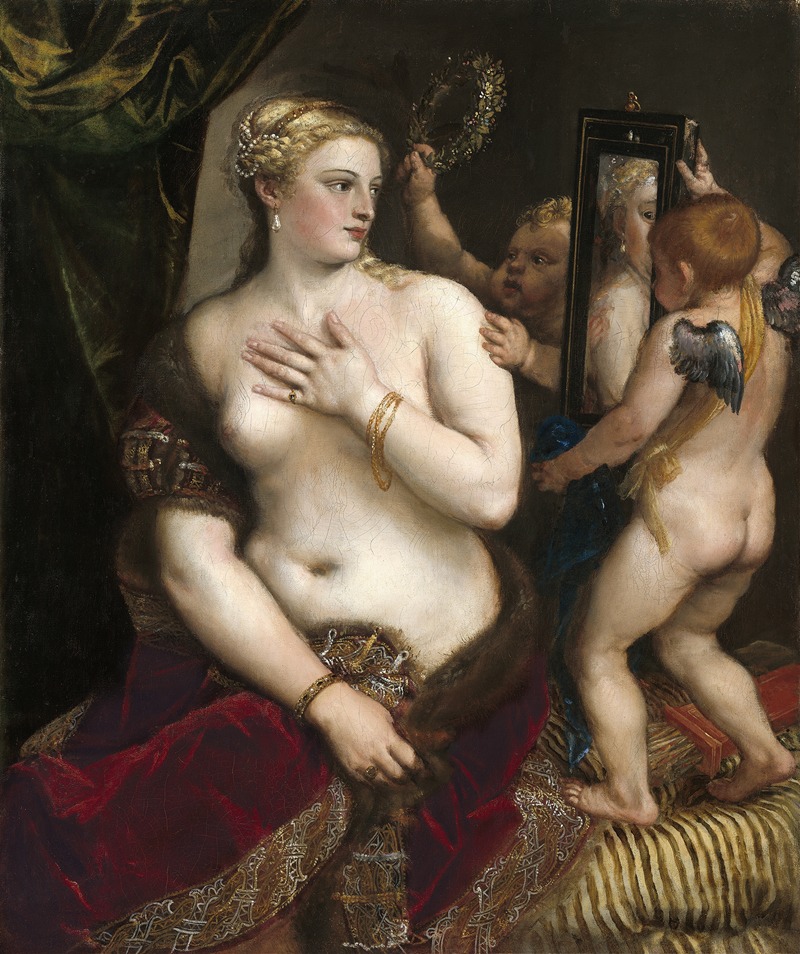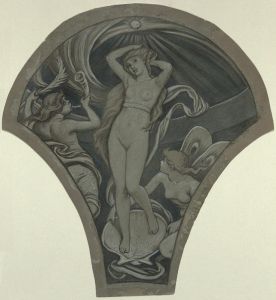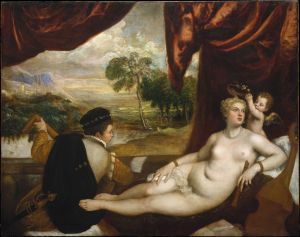
Venus With a Mirror
A hand-painted replica of Titian’s masterpiece Venus With a Mirror, meticulously crafted by professional artists to capture the true essence of the original. Each piece is created with museum-quality canvas and rare mineral pigments, carefully painted by experienced artists with delicate brushstrokes and rich, layered colors to perfectly recreate the texture of the original artwork. Unlike machine-printed reproductions, this hand-painted version brings the painting to life, infused with the artist’s emotions and skill in every stroke. Whether for personal collection or home decoration, it instantly elevates the artistic atmosphere of any space.
"Venus with a Mirror" is a renowned painting by the Italian Renaissance master Titian, created around 1555. This artwork is a prime example of Titian's skill in rendering the human form and his ability to convey sensuality and beauty through his use of color and composition. The painting is housed in the National Gallery of Art in Washington, D.C.
The painting depicts Venus, the Roman goddess of love and beauty, gazing at her reflection in a mirror held by Cupid, her son. Another Cupid is seen in the background, assisting in holding the mirror. This composition highlights the theme of beauty and self-reflection, common in Renaissance art. Venus is portrayed with a soft, idealized beauty, her skin rendered with Titian's characteristic use of warm, glowing colors. Her hair is adorned with pearls, a symbol of purity and beauty, which adds to the luxurious and divine aura of the scene.
Titian's use of color and light in "Venus with a Mirror" is particularly noteworthy. The artist employs a rich palette, with deep reds and soft flesh tones that create a sense of depth and realism. The play of light across Venus's body and the shimmering reflection in the mirror demonstrate Titian's mastery of chiaroscuro, the contrast between light and dark, which adds to the three-dimensionality of the figures.
The painting is also significant for its exploration of the theme of vanity and the nature of beauty. By depicting Venus admiring her reflection, Titian invites viewers to consider the transient nature of physical beauty and the human preoccupation with self-image. This theme was a popular subject in Renaissance art, reflecting the era's fascination with classical mythology and humanist ideals.
"Venus with a Mirror" is an excellent example of Titian's mature style, characterized by loose brushwork and a focus on the sensuality of the human form. This painting, like many of Titian's works, was influential in the development of Western art, impacting later artists who admired his ability to convey emotion and beauty through color and composition.
Titian, whose real name was Tiziano Vecellio, was one of the most prominent painters of the Venetian school. His career spanned over 60 years, during which he produced a vast body of work, including portraits, religious subjects, and mythological scenes. "Venus with a Mirror" is one of his many depictions of Venus, a subject he returned to frequently throughout his career, each time exploring different aspects of beauty and femininity.
The painting remains a celebrated masterpiece of Renaissance art, admired for its technical brilliance and the timeless allure of its subject. It continues to be studied and appreciated by art historians and enthusiasts alike, who regard it as a testament to Titian's enduring legacy as one of the greatest painters of his time.

















